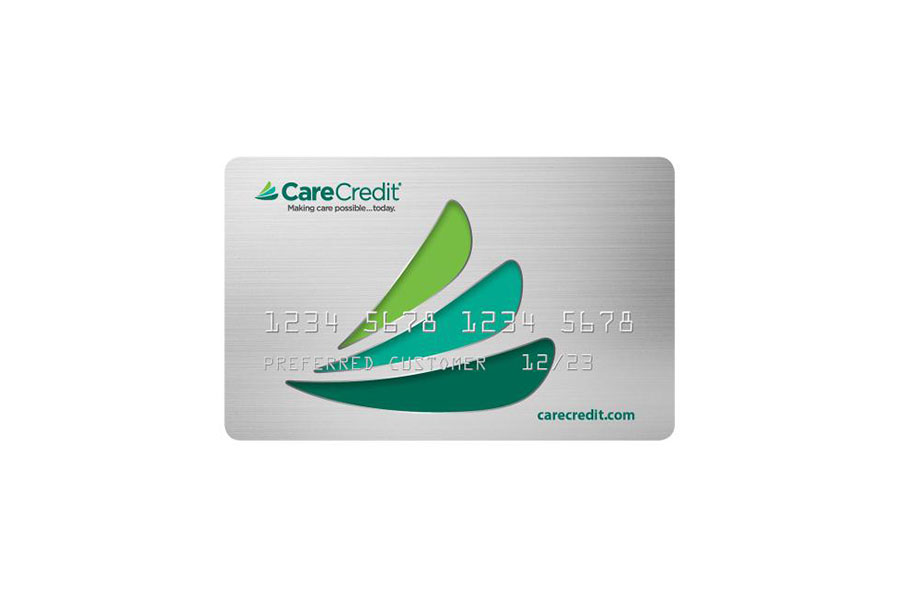The term “subprime” refers to lending practices for borrowers with lower credit scores, typically below 670. Borrowers in this category are considered higher risk by lenders due to their financial history. This designation can impact the types of loans, credit cards, or mortgages available to you and influence the interest rates you qualify for.

If you’ve faced challenges like late payments, high credit card balances, or limited credit history, understanding subprime lending is essential. It can help you evaluate your options and make informed financial decisions while working to improve your credit score.
Who is considered a subprime borrower?
Subprime borrowers are typically individuals with credit scores below 670. These lower scores signal to lenders that there’s a higher risk of missed payments or defaults, which can impact access to loans, credit cards, and other financial products. Several factors can lead to a subprime classification, and they’re often tied to a person’s financial history and habits.
One common characteristic of subprime borrowers is a record of late or missed payments. For example, falling behind on a credit card or loan payment can cause your credit score to drop significantly. Another contributing factor is high credit card balances relative to your credit limit. Known as credit utilization, this ratio plays a big role in determining your score.
Other situations that could lead to subprime status include major financial setbacks, such as filing for bankruptcy, or a limited credit history. For instance, someone who hasn’t used credit extensively might have a lower score simply because they don’t have enough data on their report to show responsible financial behavior.
A Relatable Example
Imagine someone named Alex who recently graduated from college and started their first job. Because Alex doesn’t have a long credit history, their score is lower, even though they’ve never missed a payment. On the other hand, someone like Maria, who has struggled with high credit card debt and missed payments in the past, also falls into the subprime category. While their financial situations are different, both individuals may face higher interest rates or limited loan options when they apply for credit.
How Subprime Status Affects Borrowing
Being classified as a subprime borrower can make borrowing more expensive. Lenders often charge higher interest rates to offset the perceived risk. For example, a subprime borrower applying for an auto loan might receive an interest rate of 15%, while a borrower with a higher credit score could secure a rate closer to 5%. Over time, this difference in rates can add up to thousands of dollars in extra costs.
Additionally, subprime borrowers may have fewer options when it comes to financial products. Some lenders may decline applications altogether, while others might require a cosigner or collateral to approve a loan. However, even with these challenges, many subprime borrowers can still find ways to access credit and work toward improving their financial situation.
Subprime vs. Prime Borrowing
The key difference between subprime and prime borrowing lies in creditworthiness and the financial opportunities available. Borrowers with strong credit histories have a history of managing debts effectively, and are seen as lower risk, which allows them to access better rates and terms. Those with less favorable credit histories fall into the subprime category, where borrowing costs are higher to account for the increased risk to lenders.
Benefits of Being a Prime Borrower
Prime borrowers enjoy several advantages:
- Lower Interest Rates: Loans and credit cards come with significantly reduced rates, saving borrowers money over time.
- Better Loan Terms: Options like fixed-rate mortgages and longer repayment periods are more readily available.
- Exclusive Financial Products: Rewards credit cards, high-limit loans, and flexible repayment terms are often reserved for borrowers with good credit.
For example, someone with excellent credit may qualify for a 5% interest rate on an auto loan, while a borrower with weaker credit might see a rate closer to 15%. The cost difference over the life of the loan can be substantial.
Types of Subprime Loans
Subprime loans are designed to help borrowers with lower credit scores access funding, but they often come with higher costs and more risks than loans for prime borrowers. Here’s a closer look at the most common types of subprime loans.
Subprime Mortgages
Subprime mortgages are home loans offered to borrowers who don’t qualify for traditional mortgages due to low credit scores. To offset the increased risk, these loans typically have higher interest rates than prime mortgages.
Adjustable-rate mortgages (ARMs) are a common feature of subprime loans, offering an initial lower interest rate that can rise significantly over time. This can lead to much higher monthly payments, making it harder for borrowers to keep up.
The risks of subprime mortgages became widely recognized during the 2008 subprime mortgage crisis. Many borrowers who took out adjustable-rate subprime loans faced payment increases they couldn’t afford, leading to defaults and foreclosures. This event highlighted the importance of fully understanding the terms of a subprime mortgage before committing.
Subprime Auto Loans
Subprime auto loans provide a way for borrowers with bad credit to purchase a vehicle. While they make car ownership possible, the cost is often steep. These loans typically come with significantly higher interest rates compared to loans for borrowers with better credit. For instance, a prime borrower might secure an auto loan at 5% interest, while a subprime borrower could face a rate of 15% or higher.
To avoid overpaying, it’s important to evaluate the total cost of financing before committing to a subprime auto loan. This includes looking beyond the monthly payment and calculating how much you’ll pay in interest over the life of the loan. Shopping around and comparing offers from multiple lenders can also help ensure you’re getting the best possible terms for your credit profile.
Subprime Credit Cards
Subprime credit cards are often marketed to borrowers with low credit scores as a way to rebuild credit. However, they tend to come with higher interest rates, annual fees, and other charges that can make them expensive to maintain. For example, a subprime credit card might have an APR of 25% or more, significantly increasing the cost of carrying a balance.
When considering a credit card designed for those with subprime credit scores, be sure to read the terms and conditions carefully. Some cards include hidden fees or predatory terms that can lead to costly debt. Instead, look for options with lower fees, and only spend what you can afford to pay off each month to avoid interest charges.
Alternatives to Subprime Borrowing
While having a subprime credit score can feel like a financial setback, several alternative options can help manage and even improve your credit situation. These alternatives not only provide the necessary financial assistance but also help establish a better credit history over time.
Secured Credit Cards
Secured credit cards are a practical option for borrowers looking to rebuild their credit. Unlike traditional credit cards, secured cards require a refundable security deposit upfront, which acts as collateral for the lender. This deposit minimizes risk for the issuer since they can use it to cover unpaid balances if the borrower fails to make payments.
For example, if you provide a $300 deposit, your credit limit will typically match that amount. By using the card responsibly—keeping balances low and making payments on time—you can demonstrate to lenders that you’re a reliable borrower. Most secured card issuers report your payment history to the major credit bureaus, which helps improve your credit score over time.
Once your credit improves, many credit card issuers allow you to graduate to an unsecured card or refund your deposit, making secured credit cards a stepping stone to better financial opportunities.
See also: Best Secured Credit Cards of 2025
Credit Builder Loans
As the name suggests, credit builder loans are designed to help you ‘build’ or ‘rebuild’ your credit. Offered by many financial institutions, these loans work uniquely: the loan amount is held in a bank account while you make payments. Only after you’ve fully repaid the loan do you get access to the funds. The lender reports your timely payments to the credit bureaus, thereby helping you improve your credit history.
See also: Best Credit Builder Loans for 2025
Cosigned Loans or Credit Cards
If you have a trusted individual with good credit willing to cosign a loan or credit card, you can benefit from better terms and lower interest rates. A cosigner essentially agrees to repay the debt if you’re unable to, reducing the risk for the lender. However, remember that any missed payments or defaults will negatively impact both your and your co-signer’s credit scores.
Non-profit and Community-based Financial Assistance
There are numerous non-profit and community-based organizations that offer financial assistance programs designed to help individuals with low or no credit. These include financial counseling services, low-interest loans, and even small grants in certain situations. They also provide educational resources to help you better understand credit, debt management, and overall financial health.
How Subprime Borrowers Can Improve Their Credit Score
Improving your credit score as a subprime borrower takes time and consistency, but it’s entirely possible with the right steps. Here are some key strategies to help you move toward better credit.
Stay Current on Payments
Your payment history is one of the biggest factors affecting your credit score. Paying bills on time—whether it’s for loans, credit cards, utilities, or rent—shows lenders that you’re responsible with your finances. Setting up automatic payments or reminders can help ensure you don’t miss due dates. Even small, consistent efforts here can make a significant difference over time.
Lower Debt and Credit Utilization
Reducing your credit card balances is another way to boost your score. Credit utilization—the percentage of your available credit that you’re using—should ideally stay below 30%. For example, if your credit limit is $1,000, aim to keep your balance below $300.
To tackle existing debt, consider strategies like:
- Snowball Method: Pay off the smallest debt first, then use the freed-up money to tackle larger balances.
- Avalanche Method: Focus on debts with the highest interest rates first to save money over time.
Both approaches can help you reduce debt and improve your credit profile.
Monitor Credit Reports
Regularly checking your credit reports helps you stay informed about your progress and spot any errors that might hurt your score. You can get a free credit report annually from each of the three major credit bureaus (Experian, TransUnion, and Equifax) at AnnualCreditReport.com. Look for inaccurate information, such as late payments you’ve actually made on time, and dispute any errors promptly.
Consider Professional Help
If you’re feeling overwhelmed, working with a reputable credit repair company could be a good option. These companies can help you identify and address issues on your credit report, such as disputing inaccurate items. However, be cautious and choose a trustworthy service to avoid scams or high fees.
Bottom Line
Subprime lending can serve as a lifeline for those with low credit scores. However, the reality is that it often comes with higher interest rates and terms that can make a subprime loan challenging to manage. Therefore, it’s vital to understand your options, know the risks, and take steps to improve your credit health.
Remember, being a subprime borrower isn’t a life sentence. With time, discipline, and a focus on good financial habits, many borrowers have improved their credit scores and moved into the prime category.



